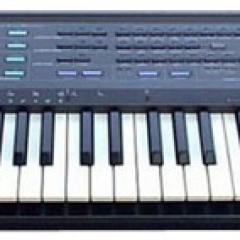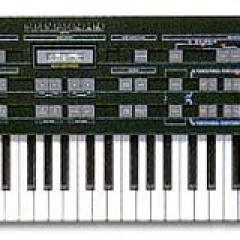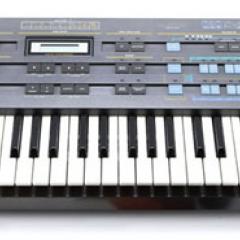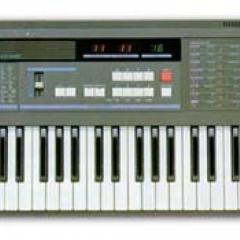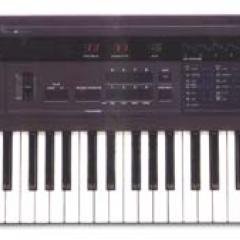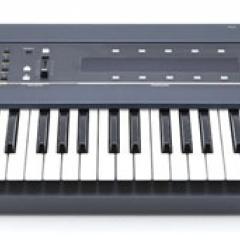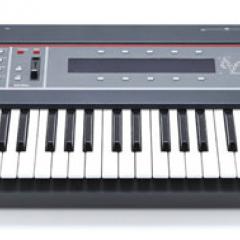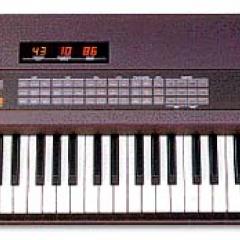Casio HZ-600
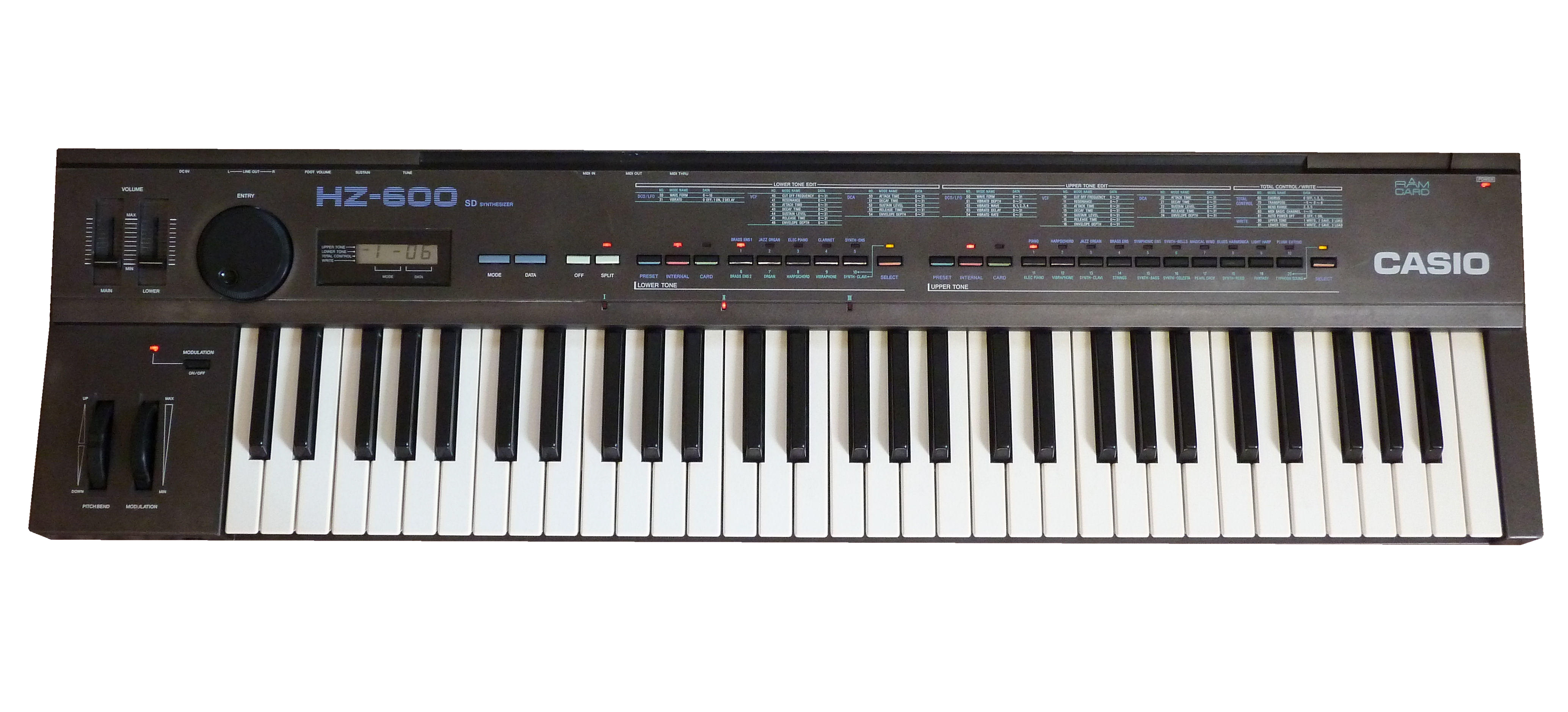
In 1987, Casio released a new Spectrum Dynamic synthesizer on the market. In principle, the SD synthesizers are digital-analog hybrids with eight voices of polyphony.
The first of the SD instruments was a professional looking bitimbral synthesizer HZ-600. This synth was followed by the HT-3000, a home keyboard-like instrument with programmable automatic accompaniment, 61 standard-size keys and built-in loudspeakers; the HT-700 with the same features like HT-3000, but with 49 small keys, and the MT-600, a preset version of the HT-700. All these instruments share an identical sound engine.
The only exception in the HT/HZ series is the HT-6000 with more professional features, such as 8 independent filters, 64 waveforms, 4 oscillators per voice, ring modulation and a velocity sensitive keyboard.
The Spectrum Dynamic (SD) does mean that some of the 32 digitally generated waves (for Upper voice) evolved with time. In the wave memory, there are also classical sawtooth, square and pulse waves, as well as white noise and combined waves. Each patch uses 1 oscillator only, and there is no possibility to tune the oscillator one octave lower or upper, and there is no sub oscillator. One LFO is available, controlling vibrato only. You can adjust its speed, depth, waveform and delay. The signal goes through a VCF (NJM2090, low-pass 4 pole filter) with adjustable cut-off frequency, resonance (no self-oscillation is achievable) and its own ADSR envelope with adjustable depth. In single mode, only one filter over all eight voices is available, like on the Korg Poly 800, but the HZ-600 (and aforementioned HT-series instruments) has two filters - the other one is used for Lower tones.
The DCA envelope (again ADSR with adjustable depth) controls not only the amplification of the patch, but also the behavior of SD waves. The patch stores the settings of the built-in chorus (off, slow weak, slow deep and fast weak) which influences both Upper and Lower tones. In the instrument's memory, there are 20 preset tones, 20 internal tones, which can be re-written by the user, and up to 120 tones can be written on an optional memory card RA-100.
Lower tones have only 16 waves to select, vibrato settings are only on/off and Delay, while the instrument uses the vibrato setting of actually playing an upper tone. Lower tones have their own VCF and DCA with identical possibilities like Upper tones. There are 10 Lower tones in ROM, 10 internal and up to 60 Lower tones can be written on the memory card.
The instrument allows to adjust pitch-bend range (2, 3, and 5 semitones), transposition (+6 / -5 semitones), to deactivate the Auto Power Off function, and to control the simple MIDI implementation: The basic channel is adjustable between 1 and 15 (for Upper tone), the Lower tone always uses the following higher channel. HZ/HT instruments recognize note on/off, move of wheels (the Modulation must be switched on) and program change commands.
Programming of the instrument is done by two switches (Parameter and Value) and on the big Alpha-Dial like a wheel. Fortunately, all parameters are printed on the keyboards front panel which makes this programming method acceptable. The keyboard without velocity and pressure sensitivity looks and feels exactly like the keyboard of CZ-3000/5000. It can be split into one of three split points, but via MIDI, the Lower and Upper tones can be controlled independently, layered over the entire keyboard range, or split anywhere.
On the front panel, there are two obligate wheels for pitch-bend and modulation, two volume sliders (main and lower), and a small LCD screen showing the selected program, or mode and value numbers in the Programming mode. In the front of the instrument, there is a headphone output. On the back there are two main outputs, foot volume and sustain pedal inputs, MIDI IN/OUT/THRU trio, power switch, DC 9V input and a small knob for pitch adjustment. The instrument can also be powered by 6 D-size batteries. This is also the only possibility to keep your programs in the RAM, because the memory is volatile and the instrument does not feature tape memory interface. Its MIDI implementation does not allow the memory dump.
The overall sound of the instrument is tinny without basses, but the HZ/HT instruments are still capable of some kinds of bells, metallic sounds, some piano, combo organ-like and string sounds, analog brassy leads and certain unusual sound effects and pads with limitations given by its para phonic design.
If you are interested in the SD synthesis and if you don't need auto accompaniment and built-in speakers, go for HZ-600. They are really cheap and relatively rare today.
Demos & Media
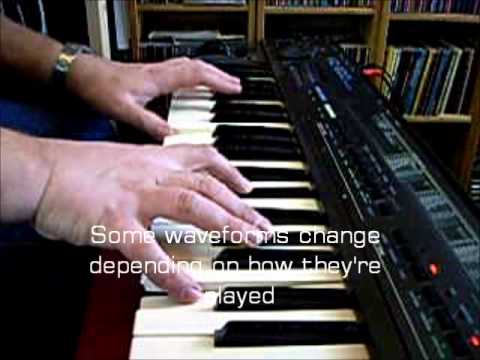
Specifications
Resources
Review written and image supplied by Michal Najvrt (najvrtson)
